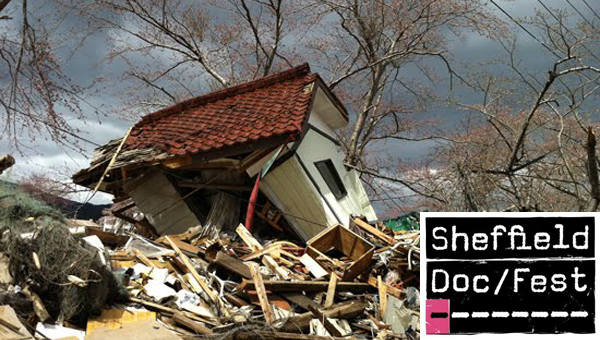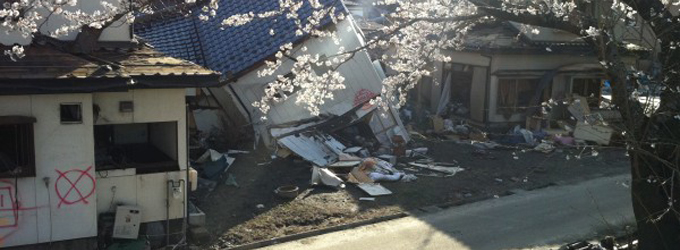httpvh://www.youtube.com/watch?v=j_xxz5mneAo
Lucy Walker, the British director of such ecologically-tinged documentary-fare as COUNTDOWN TO ZERO and WASTE LAND, turns her attention towards a people in the wake of major catastrophe with THE TSUNAMI AND THE CHERRY BLOSSOM, a short feature that is something of a poem to the people of Japan and their resilience in the face of life-altering events. By drawing a parallel with the famous cherry blossom trees that define the landscape of the country, Walker suggests linearity in the attitude of the survivors with the “mentality” of the plant, both of which are defined as being co-operatively oriented.
We’re witnessing the end of the world in a single long-shot.
16 months on from the events of March 2011, the sight of the all consuming tsunami that swept through the east of Japan is still distressing, almost surreal viewing. From an ethical point of view, it’s worrying to note that the footage has an undeniable cinematic charge. Walker’s film opens to one of the ubiquitous mobile phone-shot videos of the tsunami sweeping through a town. As fire grows, and houses crumble, the cries of spectators unsure as to the whereabouts of family members and friends can be heard, growing in concern and faltering in hope as the scale of the situation becomes more apparent. The chaos of the destruction is overwhelmingly clear as the frame becomes consumed by the act at hand. We’re witnessing the end of the world in a single long-shot.
After the screen cuts to black we find ourselves on the ground of the formerly consumed site, one month later and in the presence of a survivor, a young girl overcome with emotion and grasping a camera. As she photographs the scenario, with the intention of charting the progress of the rebuild, the girl refers to the earlier situation with an air of poeticism, declaring that we’re standing in the place where “people were consumed by the tsunami”. We spend the rest of the film meeting and hearing the stories of fellow survivors, each one with an emotional loss and connection to what has gone. A relentless pace occupies the work, echoing the chaos of the events themselves.
[Survivors] return to the wreckage of their former abodes in an attempt “to feel at home”.
As we are told that many bodies remain lost, presumably never to be found (despite the efforts of the populace and emergency services, who continue to search for lost folk) the film plays out like a post-apocalyptic movie. Survivors scavenge valuables in the rubble, and return to the wreckage of their former abodes in an attempt “to feel at home”. The threat of the Fukushima nuclear plant hangs over them. The relationship between man and nature is at the heart of the work. One man reminds us that modern comforts leave us unable to deal with the worst of nature, while the cherry blossom tree is presented as an emotional analogy for an entire people. The manner in which the Japanese populace photograph details personally, choosing their own imperfect shots over magazine or newspaper images is telling: as with the film’s opening bars, it is the handmade that rules, and the self-produced that is most valued.
Adam Batty
http://hopelies.com/
THE TSUNAMI AND THE CHERRY BLOSSOM screens again at Sheff Doc/Fest on 16 June at 10.30


